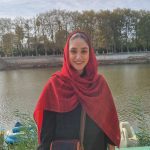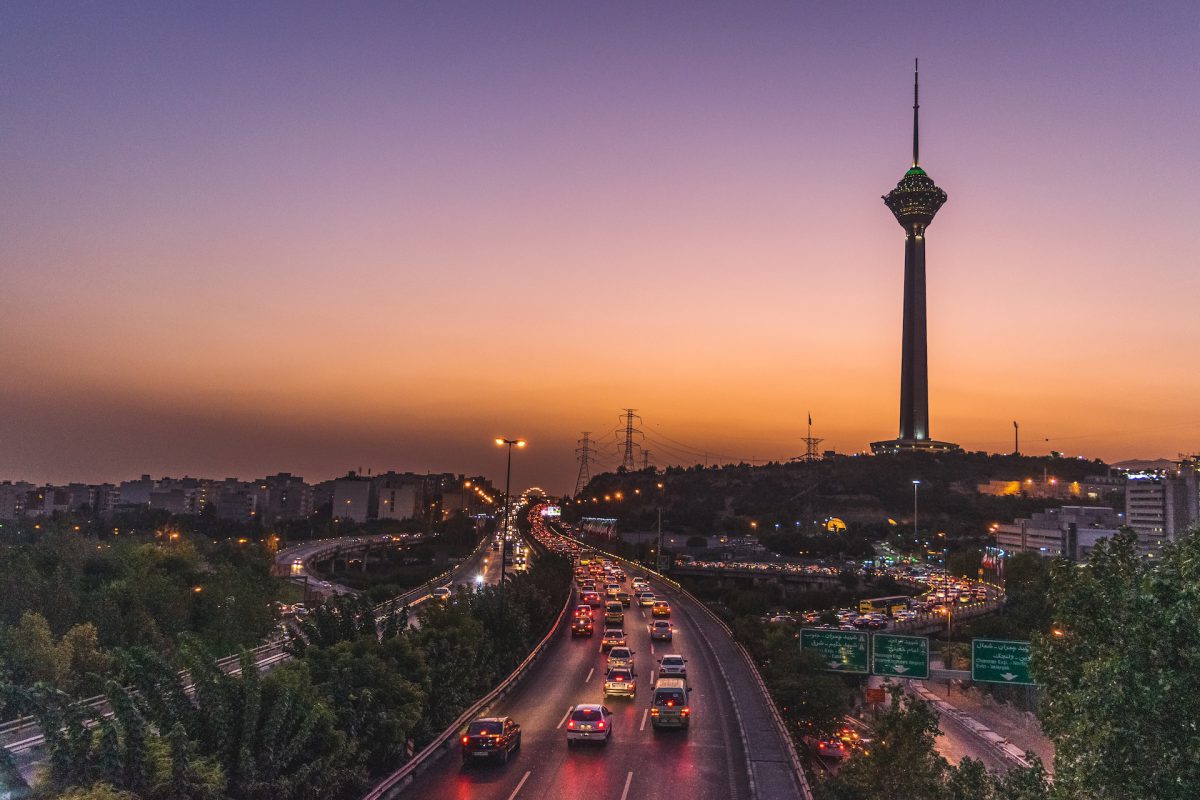Table of Contents
Tehran in a Glance

Tehran, the capital of Iran, is a city that beautifully combines history, culture, and modernity. Situated in the northern part of Iran, it is surrounded by the majestic Alborz Mountains. With its extensive network of highways and well-connected railway and airfare systems, the city stands as the hub of transportation in the country. The city boasts an array of large museums, art centers, palace complexes, and cultural hubs, making it a cosmopolitan megalopolis shaped by the influx of people from all corners of Iran.
History of Tehran
Tehran’s historical roots stretch back to 6000 BC, as confirmed by archaeological excavations. Initially, it was merely a village during the 9th century. However, following the devastation of Ray by the Mongols, many residents sought refuge in the city. In the 17th century, it became a residence for the Safavid rulers, and Shah Tahmasp I constructed a bazaar and encircling wall.
During the reign of the Qajar dynasty (1789-1925), Tehran emerged as the capital. The Qajar kings left an indelible mark on the city, erecting magnificent palaces and buildings like the Golestan Palace, Sa’ad Abad Palace, and Niavaran Palace. The essence of the Qajar era can still be felt throughout the current capital of Iran, with remnants of their grandeur scattered across the city. Subsequently, the Pahlavi dynasty, under the leadership of Reza Pahlavi, succeeded the Qajars, but their rule was short-lived.
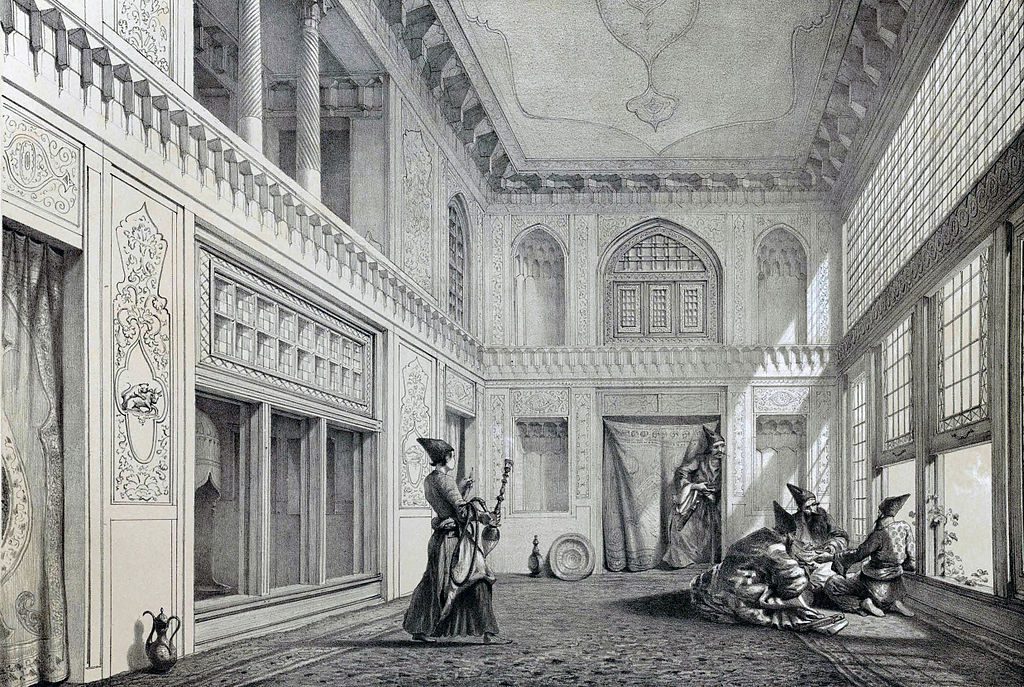
Inside an apartment or Divan Khaneh, Tehran
On September 8, 1978, protests against Muhammad Reza Shah Pahlavi, Reza Pahlavi’s son, sparked riots. The revolution gripped the nation, leading to the Shah’s departure and the triumphant return of Ayatollah Khomeini from France on February 1, 1979. Iran officially became the Islamic Republic on April 1, 1979.
Enduring the Iran-Iraq War: Tehran’s Resilience
During the Iran-Iraq War from 1980 to 1988, Tehran became a target for repeated Scud Missile attacks and airstrikes. Residential and industrial areas within the city were hit, resulting in the loss of thousands of civilian lives. Despite the devastation, Tehran swiftly recovered from each strike, mending the material damages.
Is Tehran a modern city? Today, the city’s skyline is dominated by modern high-rise buildings, rapidly replacing the few remaining old houses.
Tehran Geological Characteristics
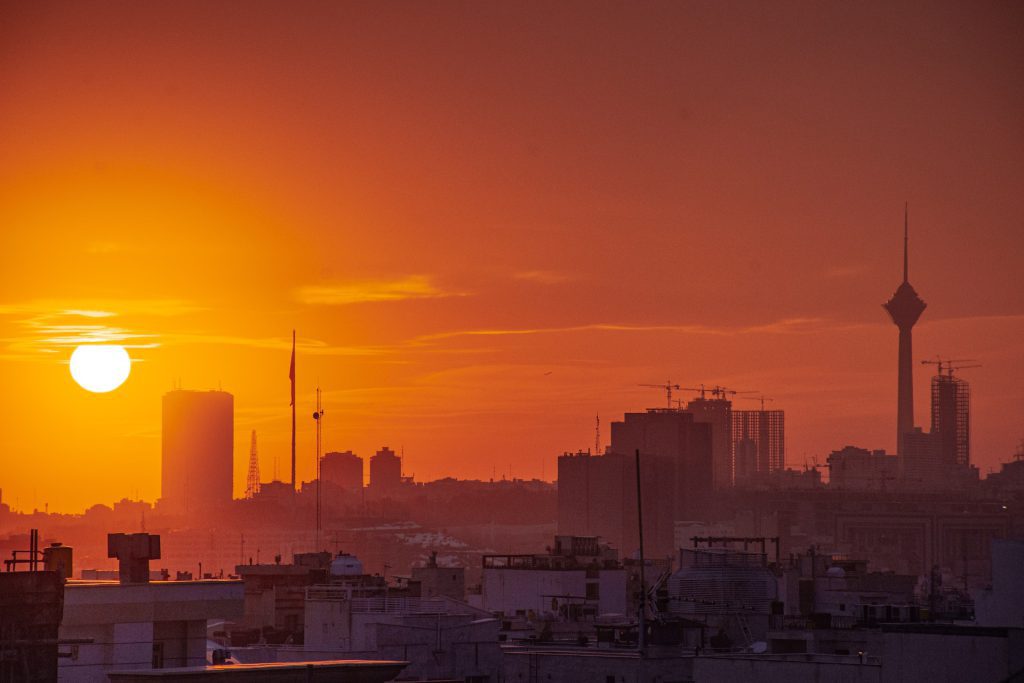
Beneath the city’s surface, there’s a fascinating geological world waiting to be discovered. The northern part of the city is all about volcanic rocks, green tuff, and shale from the Eocene period. It’s a different story in the east, where you’ll find older rocks from the Triassic to Paleogene era – think carbonate, siliciclastic, and volcanic rocks. Tehran’s geology tells a tale of two different times.
In the north, rocks from the Eocene period are like ancient records of volcanic activity and sedimentary deposits. Green tuff, mixed with shale and intermediate volcanic rocks, reveals the story of our planet’s past. Now, shift your gaze to the east of the city, and you’ll journey even further back in time, to the Triassic to Paleogene era. Here, you’ll encounter carbonate, siliciclastic, and volcanic rocks. It’s as if Tehran, Iran capital city, is a time machine, unveiling the layers of Earth’s history, each rock narrating a unique chapter.
The city’s geological diversity opens a remarkable window into Earth’s ever-evolving story.
Tehran Weather/Climate
Thanks to its geographical location, Tehran experiences a hot-summer Mediterranean climate. Bordered by the towering Alborz Mountains to the north and the central desert to the south, the city enjoys mild springs and autumns, hot and dry summers, and cold and wet winters. Choose the perfect time to visit there based on your preferences and the climate that suits you best.
Top Places to See in Tehran
When you visit Tehran, Iran capital city, you’ll find yourself spoiled for choice with an array of captivating attractions that showcase the city’s rich heritage and vibrant culture. Here are some noteworthy examples of things to do in Tehran that will undoubtedly leave a lasting impression:
Golestan Palace: Step into the Opulence of Iran’s Past
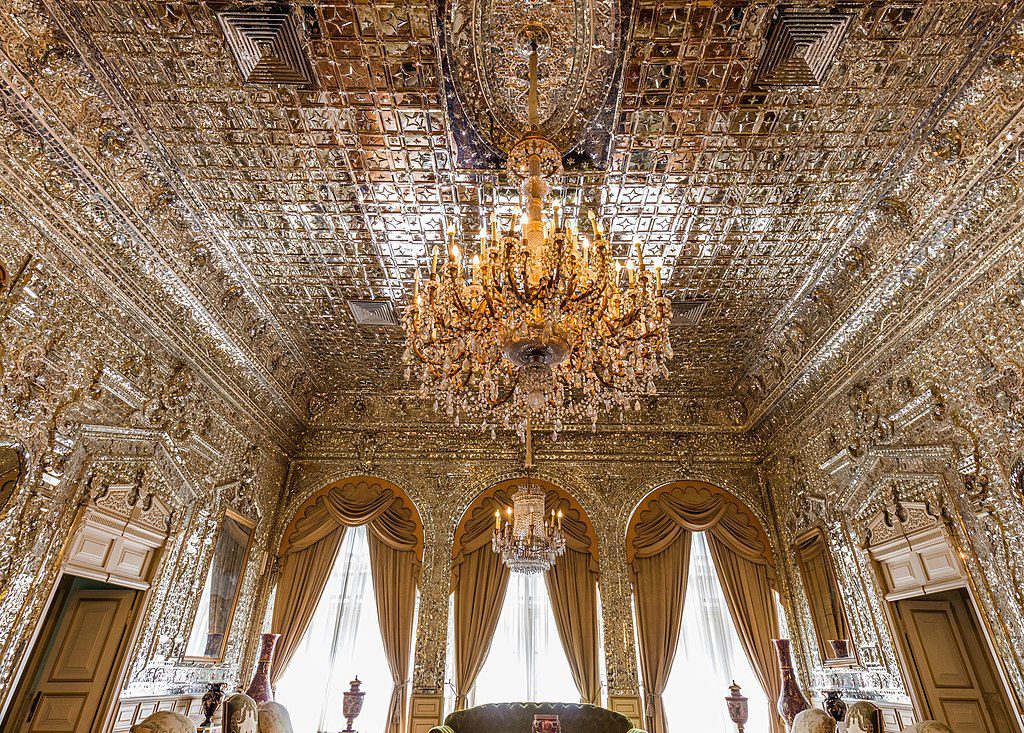
Prepare to be transported back in time as you enter the magnificent Golestan Palace. This architectural gem allows you to immerse yourself in the opulence and grandeur of Iran’s bygone era. Admire the intricate tile work, exquisite mirror halls, and lush gardens that surround this historical masterpiece.
National Museum of Iran: Delve into the Rich Tapestry of History
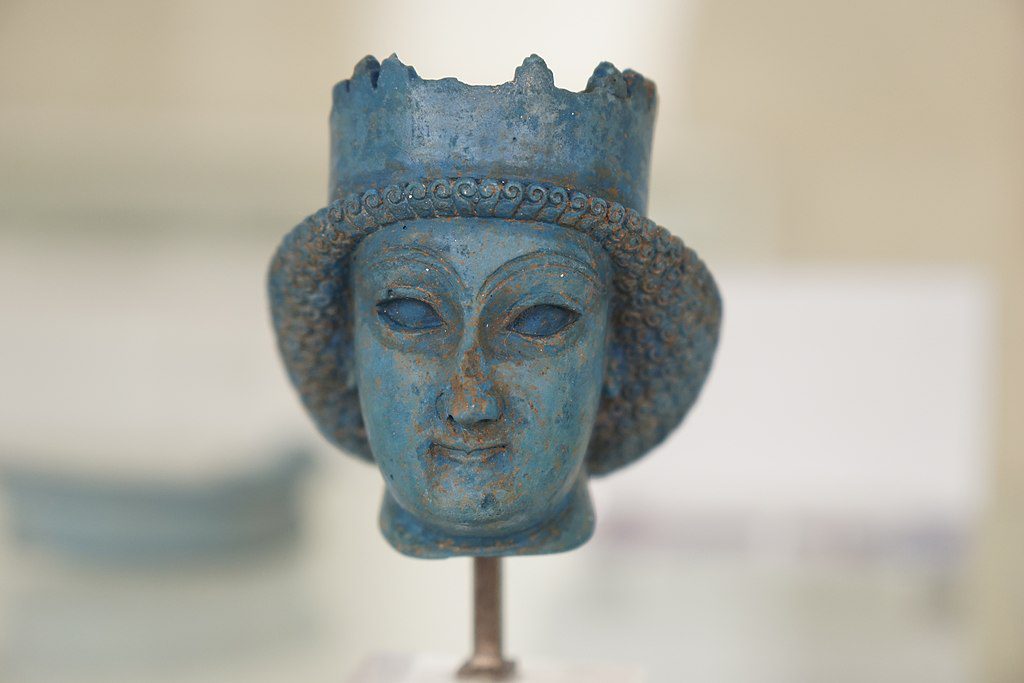
Embark on a fascinating journey through Iran’s history by visiting the esteemed National Museum of Iran. This prestigious institution houses an impressive collection of artifacts that offer insights into the country’s ancient civilizations, including mesmerizing pottery, statues, and relics from various dynasties.
Sa’d Abad Palace Complex: Uncover Tehran’s Majestic Heritage
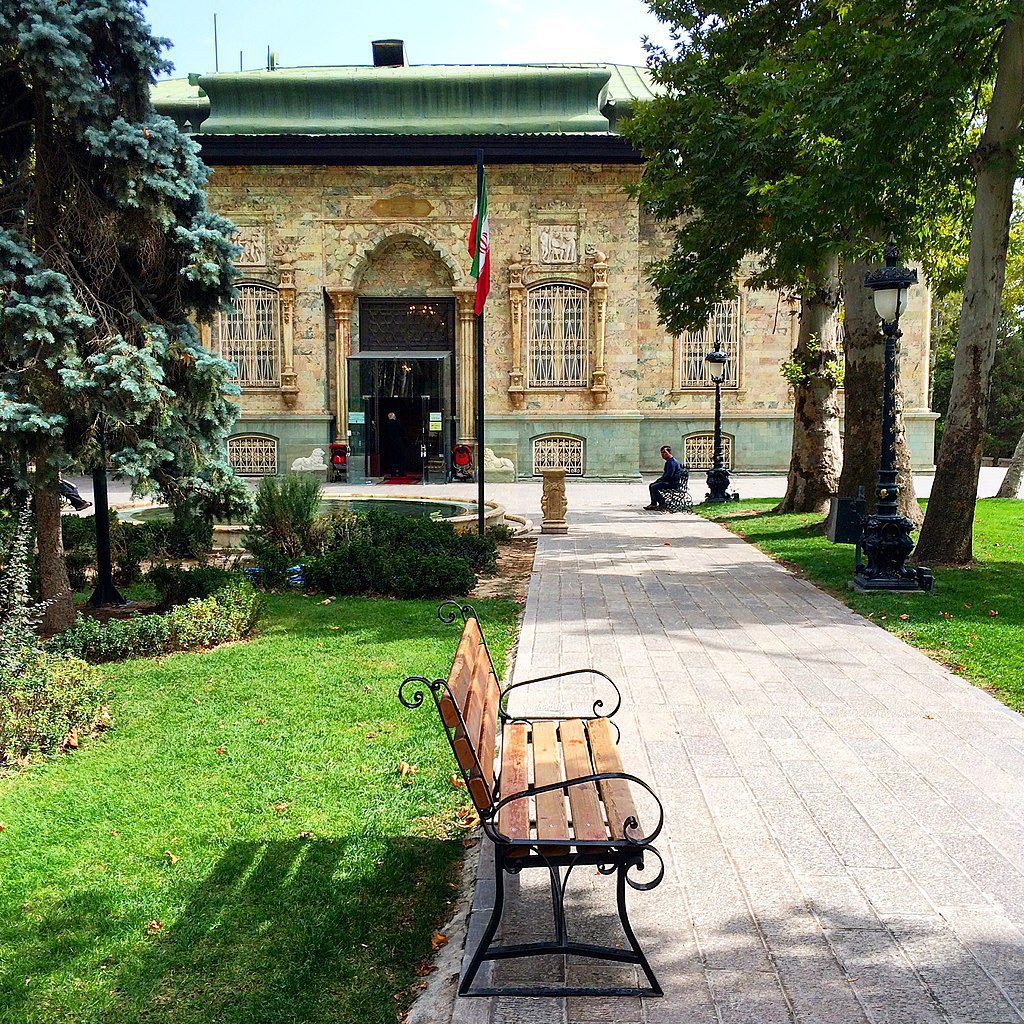
The Sa’d Abad Palace Complex beckons you to explore its extravagant palaces, each telling a story of Tehran’s illustrious past. Wander through the corridors of power and marvel at the stunning architecture and opulent interiors that once hosted royalty. The beautiful gardens surrounding the complex provide a serene escape from the bustling city.
Glassware and Ceramics Museum of Iran: A Celebration of Artistry
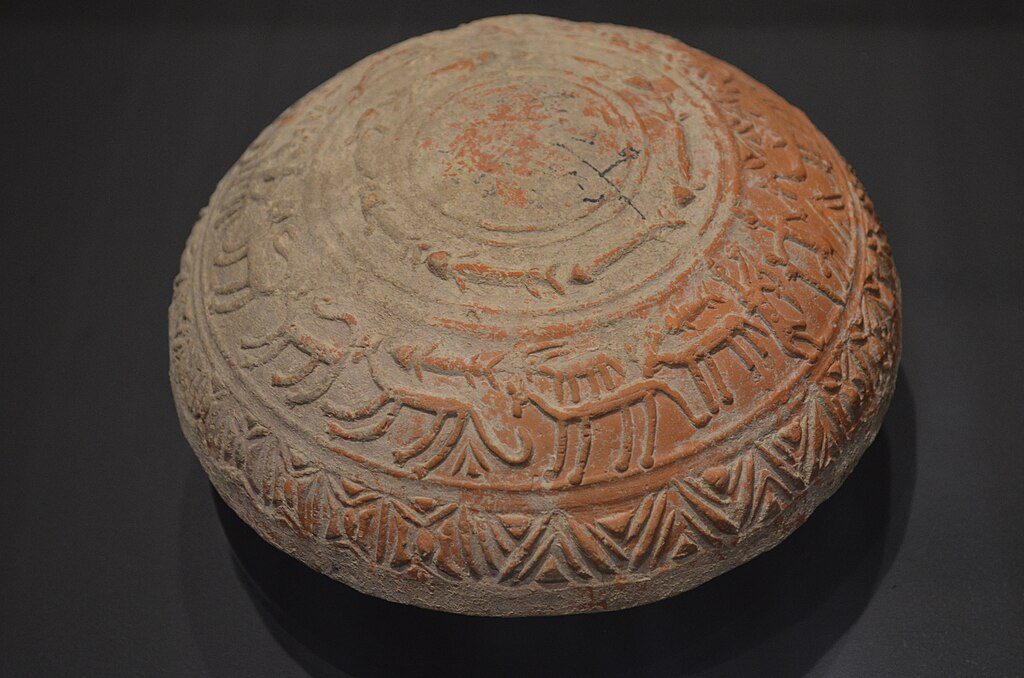
Indulge your senses in the world of glassware and ceramics at the fascinating museum dedicated to these exquisite art forms. Marvel at the delicate craftsmanship and intricate designs displayed in the carefully curated exhibits. Each piece reflects the rich cultural heritage and artistic traditions of Iran.
The Carpet Museum of Iran: Where Beauty Unfolds
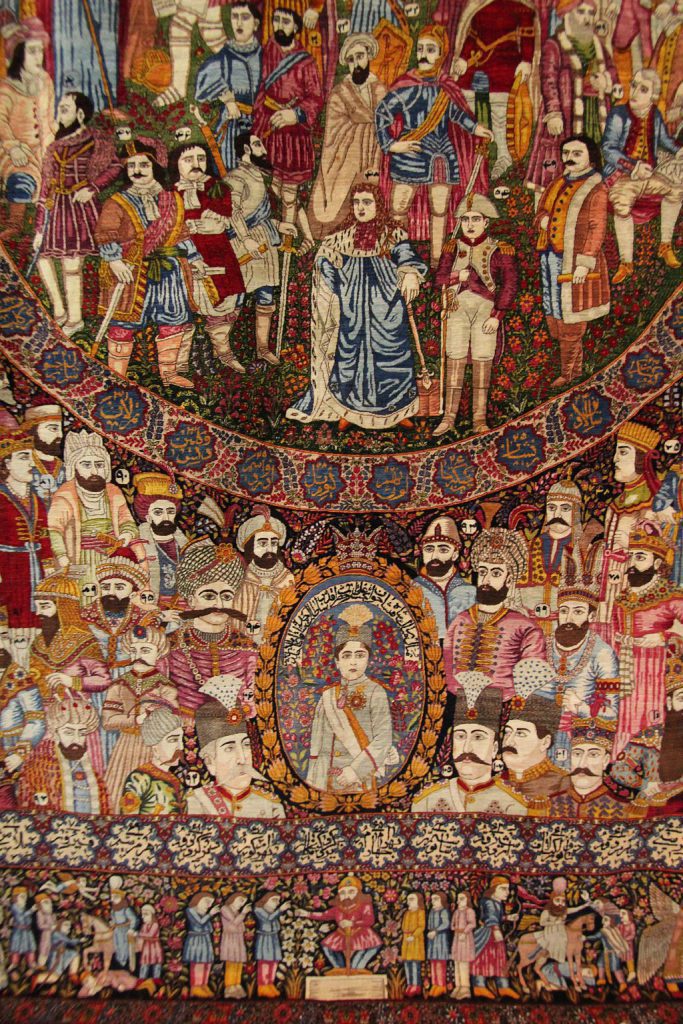
Immerse yourself in the enchanting world of Persian carpets at the Carpet Museum of Iran. Admire the vibrant colors, intricate patterns, and meticulous craftsmanship that make these carpets true works of art. Gain a deeper understanding of the cultural significance and enduring legacy of carpet weaving in Iran.
Tehran’s Under Glass Painting Museum: A Unique Artistic Journey
Prepare to be captivated by the delicate art of under glass painting, a distinctive form of Persian artistry. The museum showcases a remarkable collection of these intricately painted works, revealing the talent and skill of Iranian artists. Appreciate the fine details and vibrant colors that bring these masterpieces to life.
Niavaran Palace Complex: Where Royalty Resided
Step inside the Niavaran Palace Complex, once the residence of the Iranian royal family. Be enchanted by the stunning architecture, luxurious interiors, and beautifully landscaped gardens. This remarkable complex offers a glimpse into the lavish lifestyle and refined taste of Iran’s past rulers.
National Jewelry Museum of Iran: A Dazzling Showcase of Treasures
Prepare to be mesmerized by the breathtaking collection of the Iranian Imperial Crown Jewels at the National Jewelry Museum of Iran. This extraordinary assortment includes crowns, thrones, tiaras, jewel-studded swords, shields, and a vast array of precious gemstones, including the world’s largest collections of emeralds, rubies, and diamonds. Witness the unparalleled beauty and opulence of these royal treasures.
Milad Tower: Soaring Heights and Panoramic Views
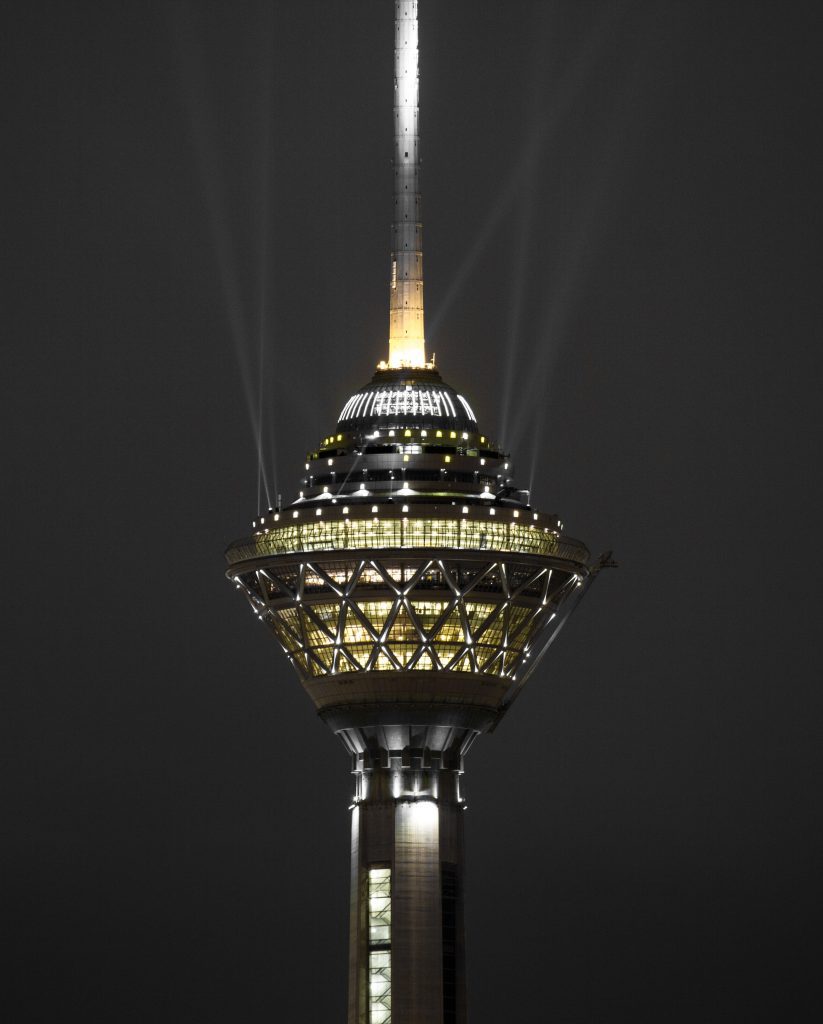
Ascend to new heights at the iconic Milad Tower and be rewarded with panoramic views of the city’s sprawling cityscape. This iconic landmark not only offers breathtaking vistas but also hosts a variety of entertainment and recreational facilities. Enjoy a memorable dining experience, indulge in shopping, or simply relish the awe-inspiring views from the observation deck.
Nature Bridge: Where Modernity Meets Nature
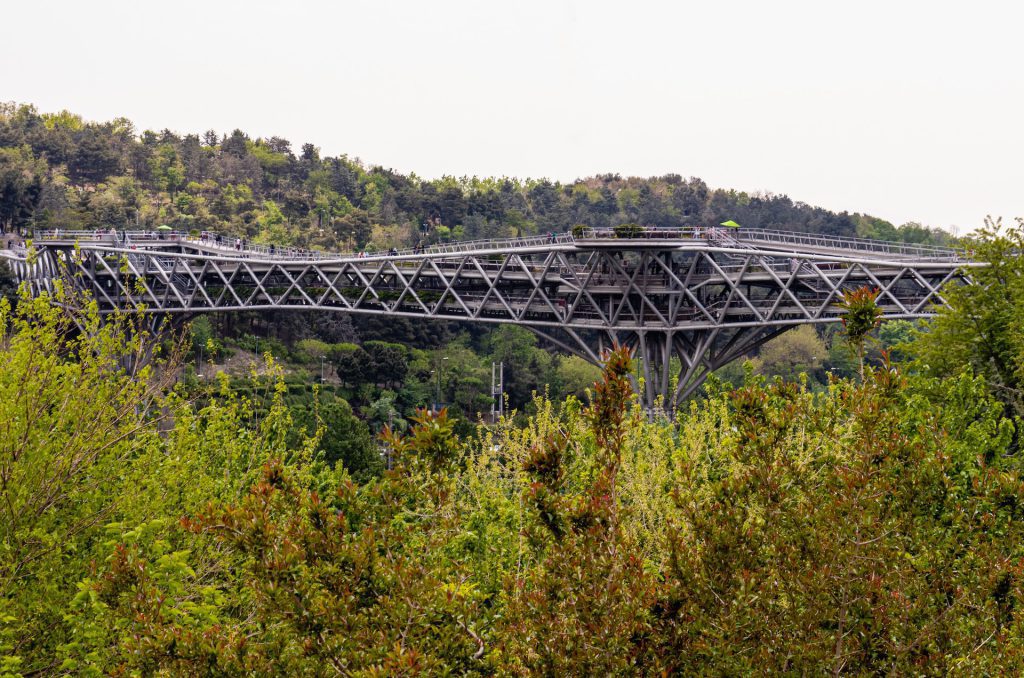
Experience the harmonious blend of modern architecture and natural beauty as you stroll along the Nature (Tabiat) Bridge. This architectural marvel connects two parts of the city, providing a tranquil escape amidst modern Tehran’s bustling urban environment.
Take in the picturesque surroundings and appreciate the seamless integration of green spaces and urban design in modern Tehran.
Shopping and the Best Souvenirs to Buy: Tehran Travel Guide

Tehran’s diverse range of souvenirs ensures you’ll find something to cherish during your visit to this vibrant city.
Doogh Abali
Quench your thirst and soothe your taste buds with Doogh Abali, a mint-flavored yogurt soda that’s great with kebabs. It aids digestion and offers a delightful experience. Look for it in Abali or along Haraz Road.
Damavand Red Apples
Take home a delicious piece of Tehran with these crisp and fragrant apples from Damavand, located in the capital’s northeastern region. They are unlike any other apples and make for a unique and tasty souvenir.
Lavashak and Plums
As you explore Tehran Darband, don’t miss the chance to pick up some Lavashak and plums. These seasonal fruits are sold in various varieties and are vibrant, attractive, and make for awesome souvenirs.
Firuzkuh Gulaj Bread
Travel 100 km east of Tehran to Firuzkuh and get a taste of their traditional bread, Gulaj. Made from milk, sugar, animal oil, eggs, and more, it’s hearty and satisfying, perfect for taking home as a Tehran souvenir.
Pottery and Ceramics
The city is a hub for pottery, and you’ll find a wide variety of ceramics in places like Parvaneh Mall and Tehran Bazaar. They serve both functional and ornamental purposes, making them great Tehran souvenirs.
Glass Art
Explore the delicate art of glass cutting and glazing in Tehran. These exquisite glass pieces, though fragile, are worth considering as unique souvenirs. Be sure to handle them with care.
Persian Carpets and Rugs
Don’t leave the city without a Persian carpet or rug. The city is known for its carpet weaving, and you’ll find a wide range of choices in different styles and designs.
Jajim Weaving
Jajim, a textile resembling a carpet but thinner, is another traditional souvenir. It’s made of vibrant cotton or woolen textiles and has multiple uses.
Nightlife in Tehran
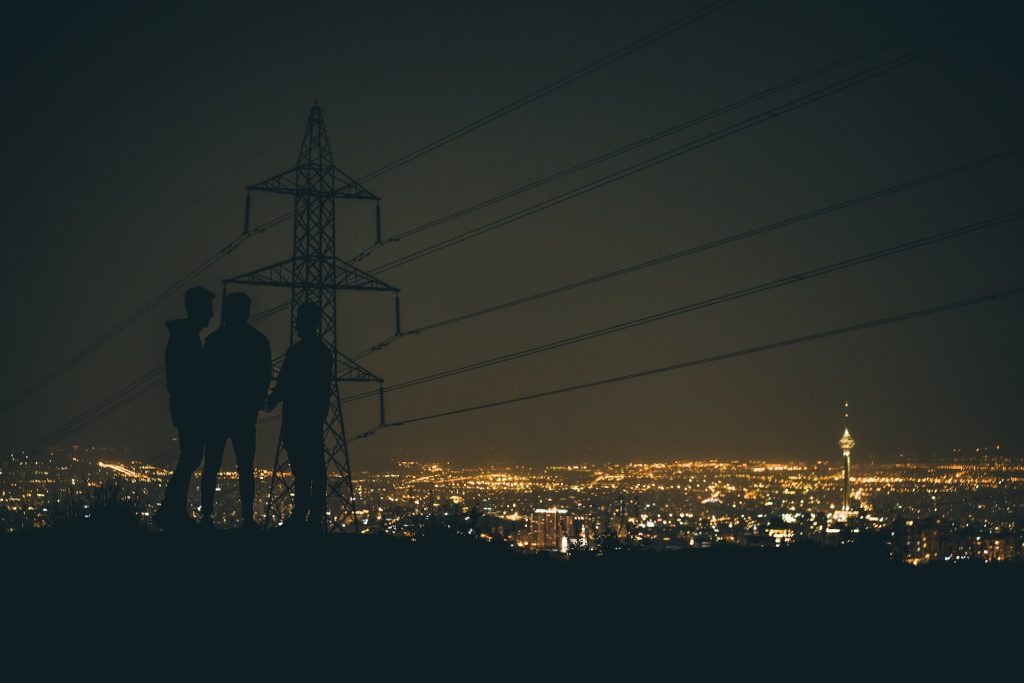
Venturing into the nightlife of Tehran is like embarking on a thrilling adventure into the heart of Persian culture. Contrary to what you might expect, this vibrant city doesn’t go to sleep when the sun sets; instead, it comes to life in a captivating and unique way. While alcohol may not be openly available, the city offers an array of enticing alternatives to keep the excitement alive.
As the night falls, the bustling streets transform into a tapestry of sensory delights. From enchanting traditional teahouses where locals gather to share stories and sip fragrant Persian tea to trendy underground music venues that pulse with energy, Tehran’s nightlife is a hidden gem waiting to be uncovered. It’s a city where life truly begins when the clock strikes 9 p.m., promising a night filled with intrigue, laughter, and a glimpse into a culture that defies expectations.
So, immerse yourself in this enigmatic after-dark world, and let it reveal its captivating secrets as the moonlight sets the stage for your unforgettable Persian night.
Tehran Suburbs
Darband
Tucked near the base of the grand Alborz Mountains, Darband is a serene escape from Tehran’s busy center. It’s known for its lush greenery, clear streams, and the delicious scent of grilled kebabs in the air. Hikers can explore mountain trails for stunning city views.
What makes Darband special is how it combines nature and culture. You can sip tea in traditional teahouses on colorful Persian rugs and enjoy chats with friendly locals. It’s a journey into Iranian culture, where nature and tradition meet.
Jordan
Jordan, in the western suburbs of Tehran, is a calm break from the city’s hustle. With tree-lined streets and contemporary buildings, it offers a taste of modern Iranian life. It’s a popular place to live for both locals and expats.
Jordan blends old and new, especially in its diverse dining options. From trendy cafes to authentic Persian restaurants, there’s something for everyone. Jordan Park is perfect for leisurely walks or picnics, and nearby shopping areas add convenience. As the sun sets, the suburb comes alive with bars and clubs. Jordan showcases Tehran’s evolving landscape, where modern living and culture coexist seamlessly.
Lavasan
In the northeast suburbs of Tehran, Lavasan is a picturesque retreat that offers a stark contrast to the city’s bustle. This charming suburb is known for its natural beauty and serene atmosphere. With its lush green landscapes and cool mountain air, Lavasan is a favorite destination for those seeking a peaceful getaway.
Lavasan is a place where you can reconnect with nature. The area is dotted with hiking trails, allowing you to explore the pristine wilderness and enjoy stunning views of the surrounding mountains. You’ll also find quaint parks and gardens, perfect for a leisurely stroll or a family picnic. Lavasan’s calm and inviting ambiance makes it an ideal spot for a weekend escape, offering a refreshing break from the fast-paced life of Tehran.
How to Get to Tehran
Getting to Tehran is an exciting journey, and you have several great ways to reach this bustling capital. Whether you prefer driving, taking a bus, flying, or hopping on a train, this city is easily accessible. Let’s dive into the different choices to help you find the best way to get to this vibrant city.
By Car
Tehran is well-connected from all directions. If you’re coming from the Persian Gulf cities, you can take roads 71 and 65, offering scenic coastal drives. From the north (Caspian Sea), road 77 takes you through lush landscapes. Travelers from the west, like Tabriz, can follow roads 32 and 38. If you’re from the east, options like roads 22, 36, and 44 are available. There are also routes from Pakistan (roads 71 and 84) and Iraq (road 37).
By Bus
Buses provide an accessible option. You can catch buses from neighboring countries or within Iran to reach Tehran. You can even book domestic bus tickets in advance through apochi.com.
By Plane
For a swift journey, consider flying. International airlines like Air France/KLM, British Airways, Lufthansa, China Southern Airlines, and Thai Airways now have routes to Tehran. Domestically, Tehran is well-connected to all parts of Iran.
By Train
Trains offer a blend of adventure and comfort. The Trans-Asia Express connects Tehran with Ankara (Turkey) and costs just 43 euros one way. Trains are available from Istanbul as well, with a change in Ankara. Within Iran, there are daily train options from cities like Tabriz, Mashhad, and Isfahan to reach Tehran.
Best Time to Visit Tehran: Weather and Festival Highlights
Determining the best season to visit Tehran depends on your preferences, desired activities, and tolerance for weather conditions. Here’s a breakdown of the seasons and festival highlights to help you plan your trip:
Spring (March to May)
Spring is a delightful time to visit Tehran, with mild temperatures and blooming landscapes. The weather is pleasant, with average temperatures ranging from 15°C to 25°C (59°F to 77°F). This season brings vibrant colors to Tehran’s parks and gardens as flowers blossom, creating picturesque settings. It’s an ideal time for outdoor exploration and enjoying the beautiful scenery.
Festival Highlight: Nowruz (Persian New Year):
Nowruz, the Persian New Year, usually falls on March 21st and marks the beginning of spring. Iranians celebrate Nowruz with great enthusiasm and it’s a fantastic time to experience Tehran’s cultural traditions. You can witness vibrant street celebrations, visit Haft-Seen displays (a tabletop arrangement of symbolic items), and participate in various festivities, including family gatherings, picnics, and traditional music and dance performances.
Summer (June to August):
Summer in Tehran can be hot and dry, with temperatures ranging from 25°C to 40°C (77°F to 104°F). It’s a popular time for outdoor activities, but be prepared for the heat. Mornings and evenings offer more pleasant temperatures, making them ideal for exploring the city. It’s advisable to stay hydrated and seek shade during the hottest parts of the day.
Festival Highlight: Tirgan Festival:
Tirgan Festival, celebrated on July 13th, is a significant cultural event that pays homage to ancient Persian traditions. This festival showcases traditional music, dance performances, art exhibitions, and various activities that reflect the rich cultural heritage of Iran. Attending Tirgan Festival provides a wonderful opportunity to immerse yourself in Tehran’s artistic and cultural scene.
Autumn (September to November):
Autumn is another favorable season to visit Tehran, with mild and comfortable temperatures. The weather ranges from 15°C to 25°C (59°F to 77°F), offering pleasant conditions for exploring the city’s attractions. The foliage takes on beautiful autumnal hues, creating picturesque landscapes throughout Tehran. It’s a great time for outdoor activities and sightseeing.
Festival Highlight:
Mehregan Festival: Mehregan Festival, held around September 23rd, is a traditional Persian festival celebrated to honor friendship, love, and autumn. During Mehregan, Tehran comes alive with vibrant cultural events, music performances, traditional dances, and exhibitions. It’s an opportunity to witness the rich tapestry of Persian traditions and engage in joyful festivities.
Winter (December to February):
Winter in Tehran can be cold and wet, with temperatures ranging from 5°C to 15°C (41°F to 59°F). While the city experiences occasional snowfall, it is not as severe as in other parts of Iran. Winter is a quieter time for tourism in Tehran, but it offers its own unique charm. You can enjoy indoor activities such as exploring museums, art galleries, and traditional tea houses.
Festival Highlight: Yalda Night:
Yalda Night, celebrated on December 21st, is a traditional Iranian festival that commemorates the winter solstice. It’s a time of family gatherings, storytelling, feasting, and celebrating the longest night of the year. Tehran’s restaurants and homes are filled with joyous celebrations, and tasting traditional winter delicacies like pomegranates, nuts, and ajil (mixed nuts) is a must.
Considering the weather and festival highlights, spring and autumn are generally considered the best times to visit Tehran due to the pleasant temperatures and festive atmosphere. However, each season has its own unique appeal, and your personal preferences and interests should guide your decision when planning your visit to Tehran.
Public Transportation in Tehran
Getting around Tehran using public transportation is a convenient and efficient way to explore the city’s numerous attractions. Here are some key options for navigating Tehran’s public transportation system:
1. Metro:
The Tehran Metro is a popular mode of transportation for both locals and tourists. It consists of multiple lines that connect various parts of the city, including major tourist destinations. The metro is known for its reliability, cleanliness, and affordability. Stations are conveniently located throughout the city, making it easy to access popular landmarks, markets, and cultural sites.
2. BRT (Bus Rapid Transit):
Tehran’s BRT system is a network of dedicated bus lanes that provide efficient transportation across the city. BRT buses are spacious, air-conditioned, and equipped with comfortable seating. The BRT routes cover a wide area of Tehran, allowing you to reach different neighborhoods and attractions. The bus stops are clearly marked, and route maps are available for reference.
3. Public Buses:
Tehran has an extensive network of public buses that serve various parts of the city. These buses are a budget-friendly option for getting around, but they can be crowded during peak hours. It’s advisable to check the bus routes and schedules in advance, as they may vary depending on the time of day and the specific destination.
4. Shared Taxis (Snapp, Tap30):
Shared taxis or ride-hailing services like Snapp and Tapsi, are popular in Tehran. You can easily book a ride using smartphone applications. These services offer convenience and the flexibility to travel to specific locations without the need to navigate public transportation routes. Shared taxis are especially useful for reaching destinations that may not be well-served by other modes of public transport.
5. Taxis:
Taxis are readily available throughout Tehran and can be hailed on the street or booked through ride-hailing apps. It’s recommended to use official taxi services or trusted ride-hailing platforms to ensure safety and avoid potential scams. It’s also helpful to have the destination address written in Persian or a map to communicate effectively with the taxi driver.
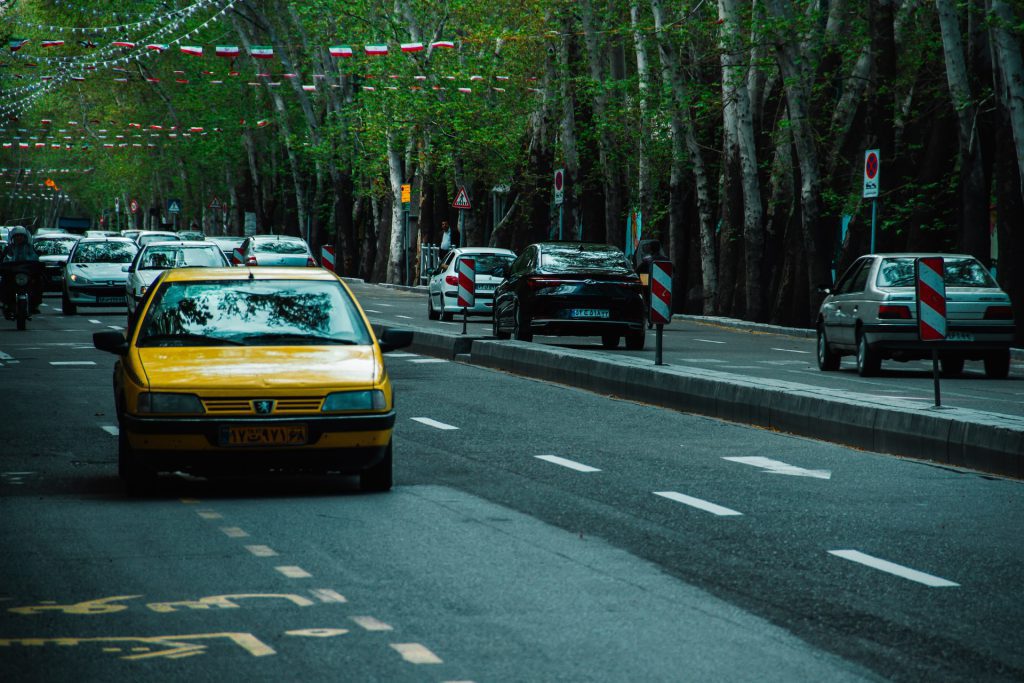
6. Walking and Cycling:
Depending on the distance and location, walking or cycling can be enjoyable and practical options for exploring Tehran. Many areas of the city have pedestrian-friendly sidewalks and designated bike lanes. Renting a bicycle from one of the city’s bike-sharing services can be a great way to experience Tehran at a leisurely pace while enjoying the local ambiance.
When using public transportation in Tehran, it’s advisable to consider the traffic conditions and plan your journeys accordingly, especially during peak hours. Using a navigation app or seeking assistance from locals can also be helpful in finding the most efficient routes to your desired destinations.
By utilizing Tehran’s public transportation options, you can navigate the city comfortably, efficiently, and affordably, ensuring that you make the most of your time exploring this vibrant metropolis.
Tehran Best Foods
When visiting Tehran, exploring its vibrant culinary scene is a must. The city boasts a rich tapestry of traditional foods and local dishes that showcase the flavors and culinary heritage of Iran. Here are some must-try traditional foods and local dishes in Iranian cuisine:
1. Chelo Kebab:
A quintessential Iranian dish, Chelo Kebab is a mouthwatering combination of succulent grilled meat, usually lamb or chicken, served with fragrant saffron rice. This iconic dish is often accompanied by grilled tomatoes and buttery grilled onions, creating a symphony of flavors.
2. Ghormeh Sabzi:
Considered the national dish of Iran, Ghormeh Sabzi is a flavorful herb stew made with a blend of herbs, including parsley, coriander, fenugreek, and leeks, combined with tender chunks of lamb or beef, kidney beans, and dried Persian limes. It is typically enjoyed with steamed saffron rice.
3. Dizi:
Dizi, also known as Abgoosht, is a comforting and hearty Iranian stew. It is prepared by slow-cooking a mixture of lamb or beef, chickpeas, white beans, tomatoes, and aromatic spices. Once cooked, the ingredients are mashed together to create a rich and flavorful broth. Dizi is traditionally eaten by breaking pieces of flatbread into broth.
4. Fesenjan:
A delectable combination of sweet and savory flavors, Fesenjan is a Persian stew made with ground walnuts, pomegranate molasses, and either chicken or duck. This rich and indulgent dish is often enjoyed with steamed saffron rice, perfectly balancing the tanginess of the pomegranate with the nutty undertones.
5. Ash Reshteh:
Ash Reshteh is a popular Persian noodle soup, often enjoyed during celebrations and special occasions. It is made with a variety of herbs, legumes, and reshteh (Persian noodles). The soup is garnished with fried onions, kashk (strained yogurt), and mint, adding a delightful combination of flavors and textures.
6. Mirza Ghasemi:
Originating from the northern regions of Iran, Mirza Ghasemi is a flavorful eggplant dish. It features roasted eggplant, tomatoes, garlic, and eggs, all cooked together to create a smoky and creamy mixture. Mirza Ghasemi is best enjoyed with warm bread or as a side dish.
7. Tahchin:
A beloved Persian rice dish, Tahchin is a savory baked rice cake that combines aromatic saffron rice with layers of tender chicken or meat, yogurt, and sometimes barberries. The result is a golden and crispy exterior with a deliciously moist and flavorful interior.
8. Sholeh Zard:
As a popular Iranian dessert, Sholeh Zard is a fragrant saffron rice pudding made with rice, sugar, rosewater, and cardamom. Topped with cinnamon, crushed pistachios, and almonds, this sweet and aromatic dessert is a delightful end to a meal.
9. Baghlava:
Indulge your sweet tooth with Baghlava, a traditional Iranian pastry made of layers of flaky filo dough filled with a mixture of finely ground nuts, such as almonds or pistachios, and sweetened with rosewater-infused syrup. The diamond-shaped pastries are beautifully garnished with crushed pistachios.
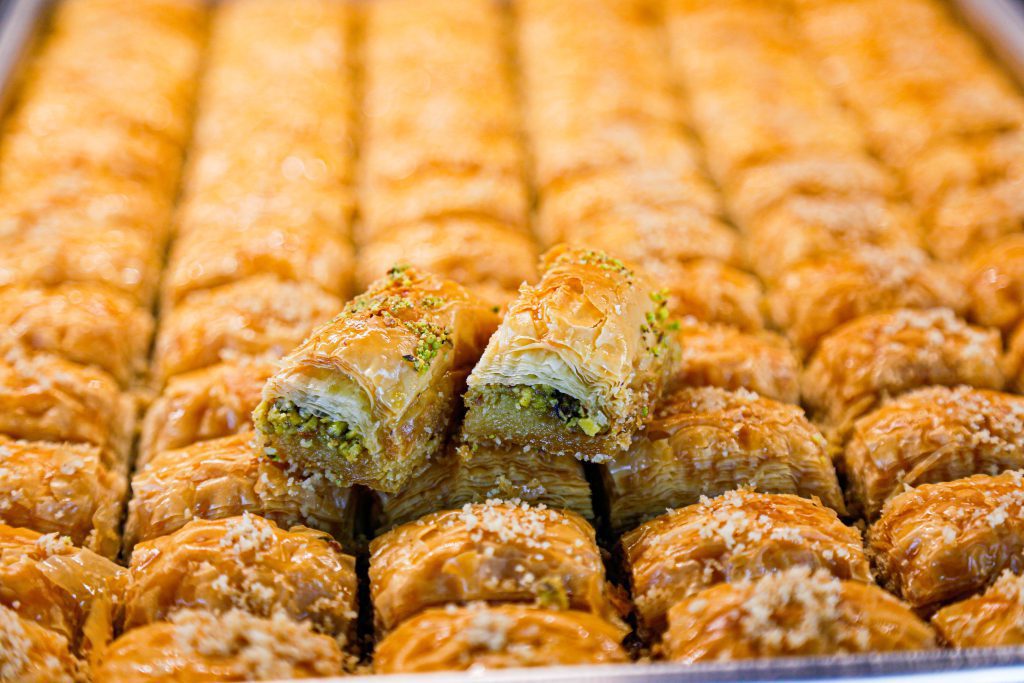
10. Faloodeh:
Beat the Tehran heat with Faloodeh, a refreshing Iranian dessert made of thin vermicelli noodles frozen in a semi-frozen rosewater and lime juice syrup. Served with a sprinkling of sour cherry syrup or lemon juice, Faloodeh offers a delightful combination of sweet, tangy, and icy flavors.
Exploring culinary treasures will undoubtedly tantalize your taste buds and provide a deeper understanding of the country’s gastronomic heritage. Don’t miss the opportunity to savor these traditional foods and local dishes that are an integral part of Tehran’s cultural fabric.
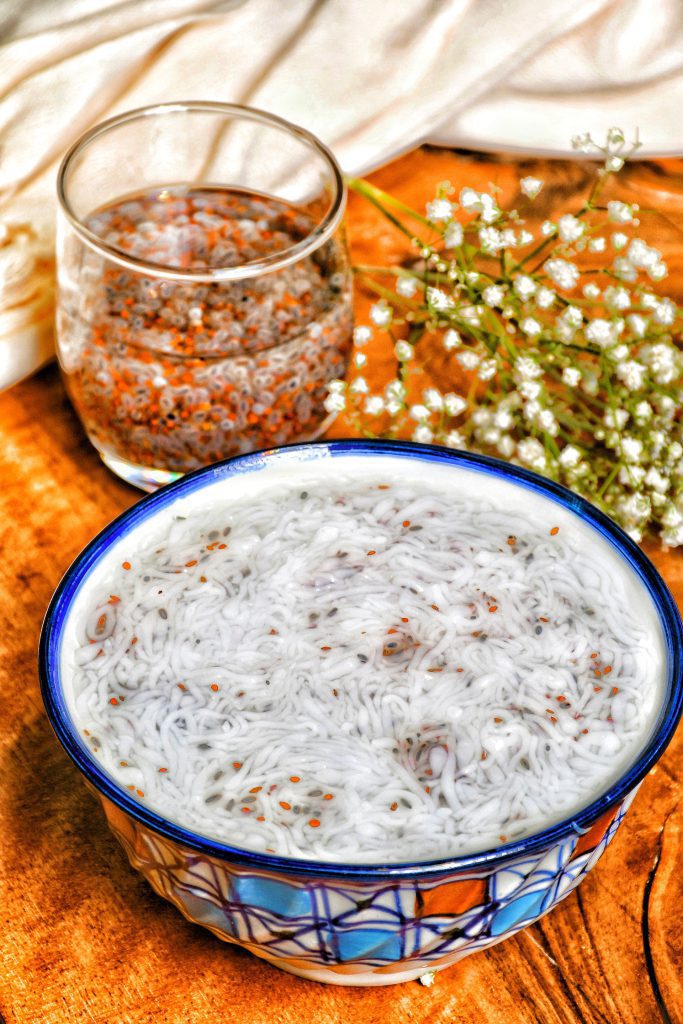
Tehran Restaurants: A Gastronomic Adventure
In Tehran, finding a place to eat is a breeze. The city is a culinary haven, teeming with a variety of restaurants and eateries that cater to every taste. Let’s explore into the most popular dining spots of Tehran, both loved by locals and frequented by curious tourists.
Taj Mahal Restaurant
In Tehran, there’s a delightful Indian restaurant at the Taj Mahal hotel. It’s a charming spot that’s been around since 2001, showcasing the beauty of Indian culture and design.
When you enter, you’ll notice the striking red decor, creating a warm and inviting atmosphere with soft lighting and a pleasant aroma. The friendly staff, hailing from both Iran and India, will guide you to your table. If you’re a lady, you can even request to wear a traditional Indian accessory called a Bindi.
The menu is full of tasty Indian dishes, from bread and spicy soups to Tandoori and rice. If you’re new to Indian cuisine, the extensive menu might seem a bit overwhelming with all its delicious choices. It’s a fantastic place to experience the flavors of India right here in Tehran.
Shandiz Restaurant
If you’re into restaurant-hopping, you can’t miss Shandiz on Africa Street. It’s known for its fantastic kebabs in Tehran.
As you walk in, the friendly staff will quickly seat you. The restaurant has a welcoming entrance, and though the tables are a bit close, it has a pleasant atmosphere.
Shandiz is famous for its Shashlik kebab and muscle dish – a taste you won’t forget. With its stylish decor and attentive staff, it’s a great place for special occasions. Shandiz is more than a restaurant; it’s a place where delicious food meets a warm vibe.
Dizi Restaurant
Dizi, a classic Persian dish, is still cherished by Iranians and visitors. In Tehran, you’ll find Dizi Sara on Iranshahr Street, known for its mouthwatering Dizi and highly regarded as one of the city’s best restaurants.
The restaurant’s decor is rich in tradition, adorned with captivating Persian murals. When you dine at Dizi Sara, expect your Dizi served in sturdy Stoneware dishes, accompanied by typical starters like yogurt, pickles, and olives. While it’s a bit pricier, the high quality and popularity of Dizi Sara make it a must-visit for a taste of authentic Persian cuisine.
Persian Plaza Restaurant
In Tehran, there’s a new hotel on Sohrevardi Street that’s catching the attention of travelers. Persian Plaza Tehran Hotel is a great pick for both business and leisure trips.
This hotel stands out, drawing the eyes of anyone passing by. The moment you step inside and meet the experienced and friendly staff, you’ll know you’ve made the right choice. With inviting restaurants and cafes, it not only offers a comfortable stay but also delicious food.
Now, let’s take a moment to relax. The lobby coffee shop at Persian Plaza Tehran Hotel is a peaceful place to unwind. Its greenery and welcoming decor make it perfect for gatherings and business meetings. It’s your go-to spot in Tehran to unwind and connect.
Nayeb Restaurant
Nayeb Restaurant is a well-known café in Tehran, with branches all over the city. The best one is in Vozara, and it’s a must-visit.
Their standout dish is the kebab-e barg (sheep filet). While the menu offers various kebabs, Koobideh is the crowd pleaser.
Service is excellent, but prices are a bit high. This place is all about authentic Iranian food, so it’s not the best choice if you’re a vegetarian. Enjoy the fantastic atmosphere and savor the flavors of Tehran at Nayeb Restaurant.
Tehran Hotels: Affordable Options for Every Traveler
When visiting Tehran, there are several budget-friendly accommodation options available that cater to the needs of budget-conscious travelers. These options provide comfortable stays without breaking the bank. Here are some recommendations for affordable accommodations in Tehran:
Guesthouses and Hostels:
Guesthouses and hostels are popular choices for budget travelers in Tehran. These accommodations offer shared dormitory-style rooms or private rooms at affordable rates. They provide a social atmosphere, and opportunities to meet fellow travelers, and often include amenities such as communal kitchens, common areas, and helpful staff who can offer local tips and guidance.
Budget Hotels:
Tehran has a range of budget hotels that offer affordable rates without compromising on basic amenities and comfort. These hotels typically provide clean and simple rooms with private bathrooms, Wi-Fi, and sometimes breakfast. It’s advisable to read reviews and compare prices to find the best deals that suit your budget and preferences.
Apartment Rentals:
Renting an apartment or a room through online platforms can be a cost-effective option, particularly for longer stays or for those traveling in groups. Apartment rentals provide more space and amenities such as kitchens, allowing you to save money by preparing your own meals. They also offer a more local and immersive experience in Tehran.
Guest Rooms and Homestays:
Consider staying in guest rooms or homestays offered by local residents in Tehran. These accommodations provide an opportunity to experience Iranian hospitality and cultural exchange. They are often more affordable than hotels and offer a chance to connect with locals who can provide valuable insights and recommendations about the city.
Budget-Friendly Areas:
Exploring neighborhoods such as Tehran’s city center, Tajrish, or areas near major universities can lead to more affordable accommodation options. These areas often have a range of budget hotels, guesthouses, and hostels catering to students and budget travelers.
When searching for budget-friendly accommodation, it’s essential to consider factors such as location, safety, cleanliness, and proximity to public transportation. Reading reviews from previous guests can provide valuable insights into the quality and value of the accommodations.
Remember to book in advance, especially during peak travel seasons or popular festivals, to secure the best rates and availability. Utilizing online travel websites and platforms can help you find competitive prices and special deals for budget-friendly accommodations in Tehran.
By choosing one of these budget-friendly accommodation options, you can make the most of your trip to Tehran while keeping your expenses in check, allowing you to allocate your funds to other memorable experiences and attractions the city has to offer.
Things to Know Before Visiting Tehran: Cultural Etiquette
When visiting Tehran, it is important to be aware of the local customs and etiquette to ensure a respectful and enjoyable experience. Here are some key customs and etiquette to keep in mind:
1. Modest Dress:
Iran is an Islamic country, and it is customary to dress modestly according to the Iranian dress code, especially in public and religious spaces. Both men and women are advised to dress conservatively, with women covering their hair with a headscarf and wearing loose-fitting clothing that covers their arms and legs. Men should avoid wearing shorts and sleeveless shirts in public.
2. Greetings and Politeness:
Iranians value politeness and hospitality. When meeting people, it is common to exchange greetings with a handshake, accompanied by a warm smile and a simple greeting such as “Salam” (Hello). It is considered polite to address people with their appropriate titles, such as “Mr.” or “Mrs./Ms.” followed by their last name, until invited to use their first name.
3. Respect for Religion and Culture:
Iran is a predominantly Muslim country, and Islam plays a significant role in people’s lives. It is important to show respect for religious practices and cultural sensitivities. When visiting mosques or religious sites, dress appropriately, remove your shoes before entering, and observe the rules and customs, such as not taking photographs if it is prohibited.
4. Gender Interactions:
Traditional gender roles and customs exist in Tehran. While interactions between genders are common and accepted, it is important to exercise cultural sensitivity. Avoid prolonged physical contact with someone of the opposite sex unless initiated by them. Public displays of affection between couples, such as hugging or kissing, should be done discreetly.
5. Dining Etiquette:
When invited to someone’s home for a meal, it is customary to bring a small gift, such as flowers or pastries, as a token of appreciation. Iranians take pride in their hospitality and often serve generous portions of food. Accepting second helpings is seen as a sign of appreciation. It is polite to try a bit of everything and express your enjoyment of the meal.
6. Accepting Invitations:
If invited to someone’s home or an event, it is considered polite to accept the invitation graciously unless you have a valid reason to decline. Iranians appreciate punctuality, but it is also common for social gatherings to start later than the designated time. Arriving a little late can be more socially acceptable, but it’s best to inform the host in advance.
7. Photography Etiquette:
When taking photographs in public places, it is advisable to be mindful of your surroundings and respect people’s privacy. Some locations, especially religious sites or military installations, may have restrictions on photography. Always ask for permission before taking someone’s photo, particularly women and religious figures.
8. Politeness and Patience:
Tehran can be a bustling city, and it’s important to remain patient and polite in interactions with locals and service providers. Iranians are generally friendly and helpful, but cultural differences and language barriers may occasionally present challenges. A friendly attitude, a smile, and basic phrases in Persian can go a long way in fostering positive interactions.
By observing these customs and etiquette, you will show respect for Tehran’s cultural norms and create a positive impression among the locals. Embracing the local customs and engaging in a culturally sensitive manner will enhance your experience and foster meaningful connections during your visit to Tehran.
FAQs about Tehran
Q1: What is the climate like in Tehran?
A1: Tehran experiences a hot-summer Mediterranean climate. It has mild springs and autumns, hot and dry summers, and cold and wet winters.
Q2: What are some notable attractions in Tehran?
A2: Some notable attractions in Tehran include Golestan Palace, National Museum of Iran, Sa’d Abad Palace Complex, Glassware and Ceramics Museum of Iran, Carpet Museum of Iran, Tehran’s Under Glass Painting Museum, Niavaran Palace Complex, National Jewelry Museum of Iran, Milad Tower, and Nature Bridge.
Q3: What are the public transportation options in Tehran?
A3: Public transportation options in Tehran include the metro, BRT (Bus Rapid Transit), public buses, shared taxis (Snapp, Tap30), taxis, and walking/cycling.
Q4: What are some traditional foods and local dishes to try in Tehran?
A4: Some traditional foods and local dishes to try in Tehran are Chelo Kebab, Ghormeh Sabzi, Dizi, Fesenjan, Ash Reshteh, Mirza Ghasemi, Tahchin, Sholeh Zard, Baghlava, and Faloodeh.
Q5: What are some cultural etiquette customs to observe in Tehran?
A5: When in Tehran, it’s important to observe customs such as dressing modestly, exchanging greetings with a handshake, showing respect for religion and culture, being mindful of gender interactions, following dining etiquette, accepting invitations graciously, respecting photography etiquette, and maintaining politeness and patience in interactions.
Last Words: Experience the Best of Tehran with a Customized Tour
Tehran, Iran modern city, is a city that mixes history, culture, and modern life nicely. It’s in the northern part of Iran, surrounded by beautiful mountains. The city is a major transportation hub in the country, with lots of roads, railways, and airports. Tehran has many big museums, art centers, palaces, and places for culture, and lots of people from all over Iran come here, making it a diverse and vibrant city.
If you’re planning to travel to Iran and yearn to discover the hidden gems of Tehran’s remarkable sites, consider embarking on a knowledge-based and customized tour. At To Iran Tour, we specialize in crafting Iran tours that cater to your preferences, ensuring an extraordinary and immersive travel experience.
With To Iran Tour, your journey through This city becomes a seamless and enriching experience. Our knowledgeable guides provide insights into Tehran’s history, culture, and traditions, adding depth to your exploration. Trust in our expertise, embrace the beauty of Tehran and prepare for an unforgettable experience in Iran.
